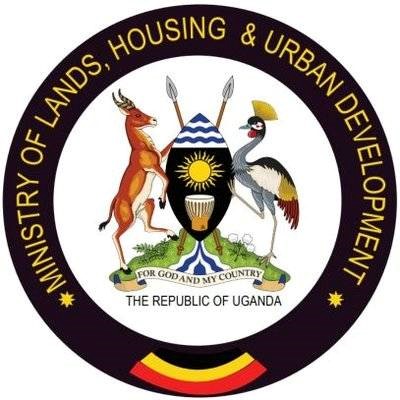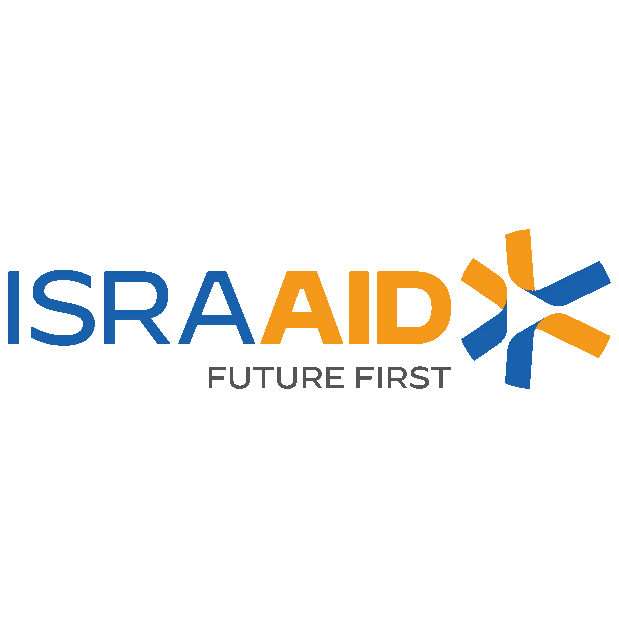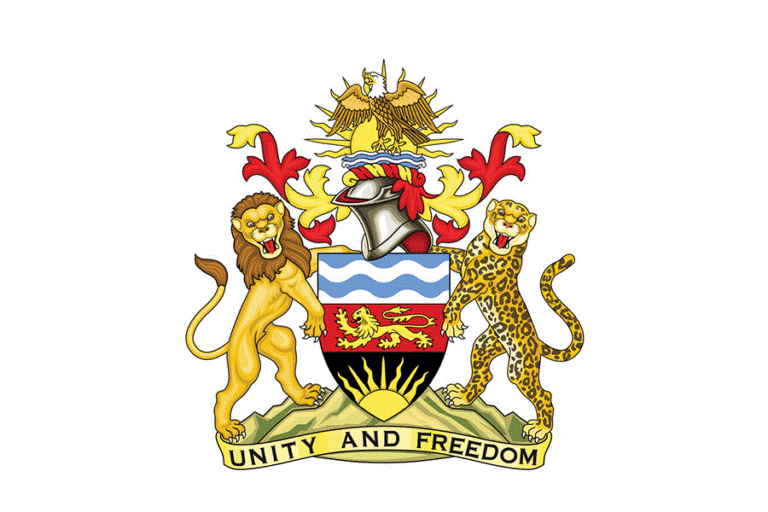GIS for Natural Resource Management Training
INTRODUCTION
Geographic Information Systems (GIS) have become critical tools in the sustainable management of natural resources, providing the ability to analyze, visualize, and manage data related to land, water, forests, minerals, and biodiversity. This training course is designed to introduce participants to the practical use of GIS for natural resource management (NRM), focusing on the collection, analysis, and interpretation of spatial data to support informed decision-making in the conservation and sustainable use of natural resources.
Participants will learn how to apply GIS in various NRM areas, such as land use planning, forestry, water resource management, wildlife conservation, and environmental impact assessments. The course emphasizes the role of spatial analysis in monitoring resources, managing ecosystems, addressing environmental challenges, and promoting sustainability in natural resource management.
DURATION
5 days
TARGET AUDIENCE
Biologists, botanists, ecologists, Foresters, NGO staff, Government officials in environment and conservation, environmental regulators, hydrologists, planners, miners, petroleum engineers, foresters, and farmers.
OBJECTIVES
- Understand the Role of GIS in Natural Resource Management:
- Introduce participants to the fundamentals of GIS and how it is applied to manage and conserve natural resources.
- Explore the key applications of GIS in monitoring, planning, and managing resources such as forests, water, land, and biodiversity.
- Collect, Analyze, and Manage Spatial Data for NRM:
- Equip participants with the skills to gather and manage spatial data from various sources, including remote sensing, GPS, and field surveys.
- Teach techniques for spatial data analysis to monitor natural resource conditions and trends.
- Apply GIS for Land Use and Environmental Planning:
- Demonstrate how GIS tools can be used to create land use maps, conduct suitability analysis, and plan sustainable land management practices.
- Train participants in using spatial data for environmental impact assessments and decision-making related to natural resource use.
- Use GIS for Forest and Wildlife Management:
- Apply GIS techniques to forest management for tracking deforestation, monitoring forest health, and planning reforestation efforts.
- Use GIS to monitor wildlife habitats, migration patterns, and conservation zones to support biodiversity and wildlife conservation initiatives.
- Support Water Resource Management Using GIS:
- Demonstrate how GIS can be used to manage water resources, including mapping watersheds, analyzing hydrological data, and planning for sustainable water use.
- Equip participants with tools to monitor water quality, assess the impacts of human activities on water resources, and plan for flood risk management.
- Monitor Environmental Changes and Ecosystem Health:
- Use GIS to track and analyze environmental changes such as land degradation, habitat loss, and climate change impacts on ecosystems.
- Teach methods for assessing the health of ecosystems and identifying areas that need restoration or conservation.
- Implement GIS for Sustainable Resource Management:
- Show how GIS can be applied to promote the sustainable use of natural resources, reducing environmental impacts while balancing economic and social needs.
- Highlight the role of spatial analysis in identifying resource extraction zones, planning eco-friendly development, and ensuring resource sustainability.
- Enhance Decision-Making and Reporting with GIS:
- Provide participants with skills to create GIS-based maps, reports, and dashboards that communicate the status of natural resources to stakeholders, policymakers, and the public.
- Demonstrate how GIS can support data-driven decision-making for natural resource conservation, management, and policy formulation.
- Address Challenges and Solutions in Natural Resource Management with GIS:
- Discuss common challenges faced in natural resource management, including data limitations, environmental degradation, and resource conflicts.
- Explore how GIS and spatial analysis can provide solutions to these challenges by enabling better resource allocation, monitoring, and conservation strategies.
COURSE OUTLINE
Module 1: Introduction to GIS for Natural Resource Management
- Overview of GIS in Natural Resource Management:
- Introduction to the basic concepts of GIS and its relevance to managing natural resources.
- Understanding how GIS supports sustainable resource management through spatial analysis and data visualization.
- Key Applications of GIS in Natural Resource Management:
- Use of GIS in forestry, water management, land use planning, biodiversity conservation, and environmental monitoring.
- Examples of successful GIS applications in natural resource projects.
- Types of Spatial Data Used in Natural Resource Management:
- Vector and raster data types and their applications in NRM.
- Sources of spatial data: satellite imagery, remote sensing, GPS, and field surveys.
Module 2: Spatial Data Collection and Management
- Remote Sensing for Natural Resource Monitoring:
- Introduction to remote sensing technologies and platforms (satellite imagery, drones) used in natural resource management.
- Types of remote sensing data and their applications in monitoring forests, water bodies, land cover, and biodiversity.
- GPS and Field Data Collection:
- Using GPS devices to collect spatial data for mapping resource boundaries, habitats, and ecological zones.
- Techniques for integrating field survey data into GIS for natural resource management.
- Spatial Data Management:
- Storing, organizing, and managing large datasets for efficient spatial analysis.
- Combining spatial data from various sources for comprehensive resource management.
Module 3: Land Use Planning and Environmental Impact Assessment
- GIS for Land Use Planning:
- Using GIS to assess land suitability for agriculture, urban development, conservation, and other uses.
- Creating land use and zoning maps to inform policy and planning decisions.
- Environmental Impact Assessment (EIA) with GIS:
- Role of GIS in conducting environmental impact assessments to evaluate the effects of development projects on natural resources.
- Identifying sensitive ecosystems, biodiversity hotspots, and areas vulnerable to environmental degradation using GIS tools.
- Land Degradation and Restoration Mapping:
- Techniques for identifying areas affected by deforestation, soil erosion, and land degradation using GIS.
- Planning and monitoring land restoration efforts through spatial analysis.
Module 4: Forest Resource Management Using GIS
- Forest Mapping and Monitoring:
- Mapping forest boundaries, land cover types, and forest health using satellite imagery and GIS tools.
- Techniques for monitoring deforestation, forest degradation, and reforestation activities.
- Forest Inventory and Biomass Estimation:
- Using GIS and remote sensing data to estimate forest biomass and carbon storage.
- Analyzing forest inventories to support sustainable forest management and conservation policies.
- GIS for Sustainable Forestry Practices:
- Applying GIS for planning sustainable logging operations and monitoring their environmental impacts.
- Mapping areas for conservation and forest resource extraction to balance environmental and economic goals.
Module 5: Water Resource Management Using GIS
- Watershed Management with GIS:
- Mapping and analyzing watersheds, river basins, and catchment areas to support sustainable water management.
- Using GIS to assess water availability, quality, and the impact of land use changes on water resources.
- Hydrological Modeling with GIS:
- Introduction to hydrological modeling tools within GIS to simulate water flow, assess flood risks, and plan for water resource management.
- Mapping groundwater resources and aquifers for sustainable water use and planning.
- GIS for Water Quality Monitoring:
- Monitoring and mapping water quality parameters (e.g., pollution levels, sedimentation) using GIS and remote sensing.
- Spatial analysis for identifying sources of water contamination and planning for mitigation.
Module 6: Biodiversity and Wildlife Conservation Using GIS
- Wildlife Habitat Mapping and Analysis:
- Using GIS to map wildlife habitats, migration corridors, and conservation areas.
- Spatial analysis to assess habitat fragmentation, land use conflicts, and wildlife movement patterns.
- Biodiversity Monitoring with GIS:
- Applying GIS and remote sensing to monitor biodiversity, identify endangered species habitats, and track changes in ecosystems.
- Using GIS for species distribution modeling to support conservation planning.
- Protected Area Management:
- Mapping and managing protected areas, such as national parks, using GIS tools.
- Monitoring human encroachment and illegal activities (e.g., poaching, logging) within protected zones through spatial data.
Module 7: Climate Change Impact Assessment and Adaptation Planning
- Assessing Climate Change Impacts on Natural Resources:
- Using GIS to assess the impacts of climate change on ecosystems, biodiversity, water resources, and land use.
- Analyzing spatial data to identify vulnerable regions and resources at risk from climate change.
- GIS for Climate Change Adaptation Planning:
- Spatial modeling to support the development of climate adaptation strategies in natural resource management.
- Planning for climate-resilient agriculture, forestry, and water management using GIS tools.
- Monitoring Environmental Changes with GIS:
- Tracking changes in land cover, water levels, and ecosystems over time using GIS and remote sensing data.
- Analyzing trends in temperature, precipitation, and extreme weather events to inform adaptation strategies.
Module 8: Sustainable Resource Management Using GIS
- GIS for Sustainable Land Use and Resource Allocation:
- Using GIS to balance resource extraction (e.g., mining, agriculture) with conservation and sustainability goals.
- Identifying areas for sustainable resource use and protection through spatial analysis.
- Ecosystem Services Mapping:
- Mapping and assessing ecosystem services (e.g., carbon sequestration, water filtration) provided by natural resources using GIS.
- Analyzing the economic and environmental value of ecosystems to support conservation efforts.
- Spatial Planning for Renewable Energy Projects:
- Applying GIS to plan and assess the environmental impact of renewable energy projects, such as wind and solar farms.
- Identifying suitable locations for renewable energy development based on land use, climate, and environmental factors.
Module 9: Disaster Risk Management and Emergency Response Using GIS
- Disaster Risk Assessment with GIS:
- Mapping areas at risk of natural disasters such as floods, landslides, and wildfires using GIS.
- Analyzing vulnerability and exposure of natural resources and human populations to disasters.
- GIS for Emergency Response Planning:
- Using GIS to plan and coordinate emergency responses to natural disasters, including resource allocation and relief distribution.
- Developing early warning systems for natural disasters using real-time spatial data and remote sensing.
- Post-Disaster Environmental Impact Assessment:
- Assessing the impact of disasters on natural resources and ecosystems using GIS.
- Planning for resource recovery and restoration in the aftermath of disasters through spatial analysis.
Module 10: Advanced GIS Techniques and Tools for NRM
- Advanced Remote Sensing for NRM:
- Introduction to advanced remote sensing technologies, including LiDAR, hyperspectral, and multispectral imaging for detailed resource mapping.
- Applying remote sensing data to monitor and model changes in ecosystems, land cover, and resource availability.
- Spatial Modeling for Natural Resource Management:
- Using spatial models to simulate natural resource scenarios, predict environmental changes, and optimize resource use.
- Case studies on the use of GIS-based spatial models in forest management, water resource planning, and wildlife conservation.
- Machine Learning and Artificial Intelligence in GIS:
- Applying machine learning algorithms to analyze large spatial datasets for predictive modeling in NRM.
- Using AI for automated monitoring of environmental changes, species tracking, and resource management.
Module 11: Communicating and Reporting Natural Resource Data Using GIS
- Creating Resource Management Maps:
- Designing informative maps to communicate natural resource data to stakeholders, policymakers, and the public.
- Techniques for visualizing spatial data in a clear, accessible manner for decision-making and advocacy.
- Developing GIS-Based Dashboards for NRM:
- Creating interactive dashboards for real-time monitoring and reporting on resource management indicators.
- Using dashboards to track deforestation rates, water quality, wildlife population trends, and other key metrics.
- Reporting and Advocacy with GIS:
- Using GIS-generated reports and maps to support environmental advocacy, policy-making, and resource conservation efforts.
- Techniques for presenting spatial analysis findings to non-technical audiences for effective communication.
CERTIFICATION
- Upon successful completion of this training, participants will be issued with Macskills Training and Development Institute Certificate
TRAINING VENUE
- Training will be held at Macskills Training Centre. We also tailor make the training upon request at different locations across the world.
AIRPORT PICK UP AND ACCOMMODATION
- Airport pick up and accommodation is arranged upon request
TERMS OF PAYMENT
- Payment should be made to Macskills Development Institute bank account before the start of the training and receipts sent to info@macskillsdevelopment.com
Gis For Natural Resource Management Training in Kenya
| Dates | Fees | Location | Action |
|---|---|---|---|
| 13/10/2025 - 17/10/2025 | $4,950 | Dubai |
|
| 27/10/2025 - 31/10/2025 | $1,250 | Nairobi |
|
| 10/11/2025 - 14/11/2025 | $4,000 | Johannesburg |
|
| 10/11/2025 - 14/11/2025 | $4,000 | Johannesburg |
|
| 17/11/2025 - 21/11/2025 | $1,500 | Mombasa |
|
| 24/11/2025 - 28/11/2025 | $1,250 | Nairobi |
|
| 01/12/2025 - 05/12/2025 | $2,900 | Kigali |
|
| 08/12/2025 - 12/12/2025 | $1,250 | Nairobi |
|





















